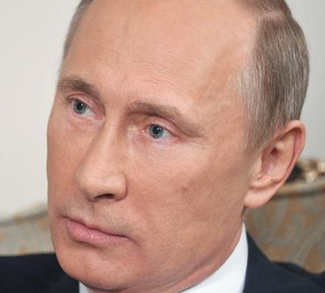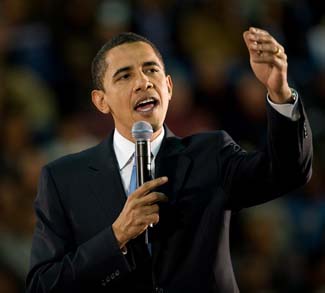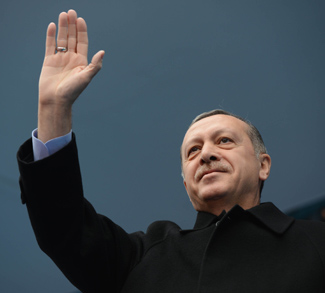Doubt over the role of the Islamic State (IS) in the suicide bombings near a police station in Novoselitsky (Stavropol) region was raised by many in April 2016, include Mikhail Roshchin and Akhmet Yarlykapov, two Russian experts on Islam, who argued that such an operation was too costly for such little gain. This event was followed approximately four months later by IS calling on its supporters to carry out jihadist attacks against Russians, killing them “in their homes.” A masked member of the group is seen in a short video on social media stating, “[l]isten [Russian President Vladimir] Putin, we will come to Russia and will kill you at your homes … Oh Brothers, carry out jihad and kill and fight them.” The declaration coincided with the destruction of a Russian Mi-8 aircraft that was shot down during a humanitarian mission, killing all five onboard.
Using any weapons available, the call to arms could lead to attacks similar to those witnessed in France over the past 18 months. In the past several weeks there have been four attacks in southern Germany (though not all of them have been IS-related, including a suicide bombing carried out by a Syrian in Ansbach. The latest attacks in Europe took place south of Rouen, Normandy, when IS followers killed an elderly Catholic priest.
Since 2014, Russians have become increasingly uncomfortable, even angry at requests and plans for Islamic religious building construction.
Russia has been a major actor in the war in Syria and has taken on a larger security role in the Middle East and Central Asia. Russia has also been a key factor in the events that have unfolded in Syria since its military intervention which commenced on September 30, 2015. Following weeks of intensive attacks against IS militants in support of pro-regime forces, the Russian air force renewed its focus on Aleppo back in April. Russia’s arsenal in Syria showcased M2s, Su-25SMs and Su-25 UBMs, Su-30SMs, and Su-34s. At one point in Russia’s operations, 60 airstrikes per day were recorded. Russia reinforced its aerial assets with ground units and sea power. While Russia failed to show its strength comparable to US power projection against Iraqi forces in 1991 and 2003, it was still able to make a serious impact on rebel groups.
Putin and Assad are longtime allies. Russia’s recent military intervention was a demonstration of significant military force in Russia post-Soviet history, but IS has also declared that it intends to rope Russia into another perilous mire similar to its costly 10-year debacle in Afghanistan from 1979-1989. IS’ call provides the terrorist organization with an opportunity to build its support base and bring followers and would-be followers together.
Russia offers many high-value political and economic targets for Islamic State, including busy urban areas. On July 3, IS suicide bombers killed nearly 200 people when they detonated their bombs in a busy shopping district of Baghdad called Karrada. A suicide bomber who detonated his device at the Mosque in Medina where the Prophet Mohamed is buried killed four members of Saudi Arabia’s security forces. IS has demonstrated its capacity to orchestrate highly lethal attacks in a very professional way. The group has also been successful in inspiring lone-wolf terrorists to plan and execute their own deadly assaults, notably the attacks the led to 84 deaths on the Promenade des Anglais in Nice, when a man used a truck to plough through crowds of people. The call by IS should be taken seriously, as recent attacks on Russian soil now brings to the fore the significant security challenge that IS terrorists pose to the Russian people and the integrity of the Russian state. The call by for jihadist attacks in Russia to launch attack on key targets may indeed be a signal to IS sleeper cells within the Russia territory to engage in various levels of violence against the state.
Although the lethality of IS-related attacks varies over time, approximately 150 incidents have been recorded to date. The majority of those have been recorded in the Middle East and North Africa, and approximately 8 have been recorded in Western Europe. While IS oil revenues per month have fallen considerably, the group still manages to bring in nearly $20 million USD to fund its terrorist activities. The group’s funding sources are diverse and IS “has accepted funding from government or private sources in the oil-rich nations of Saudi Arabia, Qatar and Kuwait – and a large network of private donors, including Persian Gulf royalty, businessmen and wealthy families.”
A considerable number of fighters form the ranks of IS but as it slowly loses territorial control in its self-proclaimed “state,” the group has been expanding beyond its “home” territory. In a sense, it has no territory to call an official home, nor does it need one. Because IS boasts numerous bases beyond Syria and Iraq, it will be able to capitalize on the fidelity of jihadi groups beyond the Levant.
Islamic State’s close proximity to Russia and its ability to spread its ideological and extremist messages to loyal and potentially loyal individuals close as well as within Russia raises a number of dangerous security prospects for the Putin government. Even if IS’ messages inspire lone wolves within Russia, the human toll could echo those of recent attacks in France and Iraq. Counterinsurgency expert Dr. David Kilcullen, author of The Accidental Guerrilla, labeled this phenomenon “remote radicalization.” Russian Foreign Minister Sergei Lavrov discussed proposals for joint operations against IS with US Secretary of State John Kerry in in early 2016. However, there is reason to believe that military successes against IS in its home territory will have a large impact on the jihadi group. Calls have been made to IS supporters to mobilize and fight at home rather than making a journey to Syria.
The journey to Syria is only necessary to support holding the territory that is currently surrounded by coalition forces. Turkey’s restriction of the Syrian border has reduced the flow of foreign fighters. Kurdish fighters have also helped stemmed the flow of people reaching the IS heartland. Despite the opinion that IS’ territorial expansion has served as one of its primary recruiting tools, a loss of territory does not signal the demise of its recruitment campaign entirely. Attacks like those seen France, Belgium, Germany, the US, Syria, Egypt, Libya, Iraq, Saudi Arabia, Yemen, and others, provide incredible appeal for would-be terrorists.
Russia currently has a Muslim population of approximately 10 million people. Since 2014, Russians have become increasingly uncomfortable, even angry at requests and plans for Islamic religious building construction. Despite Moscow’s growing Muslim population, Moscow has prohibited new mosques from being built. Construction planned alongside Islamic festivals has been just some of the sources of tension felt between Muslims and non-Muslims in Russia. The tension has the potential to provide the basis for radicalization and violent action by fanatics inside Russia. Putin’s actions in Chechnya been overtly anti-Islamist. In fact, IS may exploit these extant grievances between the Russian government and the Muslim population to inspire lone wolf terrorists among the aggrieve minority Muslim groups in the country, thereby putting the state into greater security risk and terrorist attacks.
Russia’s “Islamic threat’ was a salient factor in its security concerns since the late-1970s when the Soviet invasion of Afghanistan revealed the deep implications of Russia’s Slavic and Muslim demographics. By 1986, the Soviet’s war in Afghanistan was labeled a “bleeding wound” by Gorbachev. Soviet withdrawal was more than a defeat: it signaled the beginning of the regime’s rethink of the Soviet Union’s global security role. Gordon M. Hahn writes in Russia’s Islamic Threat that the Soviet Union’s first war against the Muslims “in decades had crystallized for many USSR’s “macro-structural” dilemma. Russia’ present fight against Islamic extremists can fuel those pre-existing dilemmas.
After the Soviet Union fragmented in the early 1990s, speculation carried forward about the potential for a second round of break-up based on new ethnic and demographic divisions in the remaining Russian state. The long-term Muslim challenge never disappeared. Even several decades ago, Moscow’s Muslim challenges led directly to the creation of an Islamist revolutionary movement and an Islamist terrorist network within the Russian state’s own borders. These events posed direct threats, notes Hahn, to the “integrity of the Russian state.”
The threat of Islamic terrorism in Russia continues in contemporary Russia. Nationalist insurgency has, since 2007, turned to Salafist-Takfiri Jihadism, although more precise analysis is required to determine the group’s ideological base. Departing from the establishment of an independent state, the Caucasus Emirate in Chechnya has turned to a much broader policy of waging violence against all Russians and non-Muslims. The ideology informs extremists of the need to liberate the Islamic Ummah from jahiliyyah and to exterminate all murtads and kuffar in order to establish Sharia law. Islamic State’s declaration has a deep source of anti-Muslim sentiment by the Russians over the previous centuries from which to draw. Historical and culture suppression and maltreatment have already provided a sound basis for severe enmity and conflict between Russia and Russian, and Muslims and radical Islam.
As IS continues to lose territory, its prospective fighters are also waking-up, realizing that the al-Qaeda terrorist network had it right the whole time by choosing not to attach a return address to its network the way IS has with its so-called caliphate. IS will clue in sooner or later. It does not need to maintain control over a geographical locale to proliferate a violence ideology to individuals around the world.
The opinions, beliefs, and viewpoints expressed by the authors are theirs alone and don’t reflect any official position of Geopoliticalmonitor.com.




